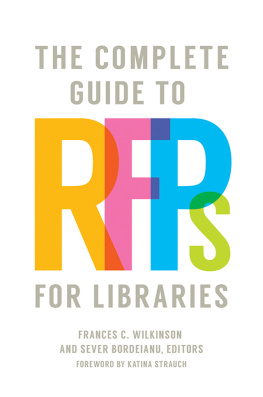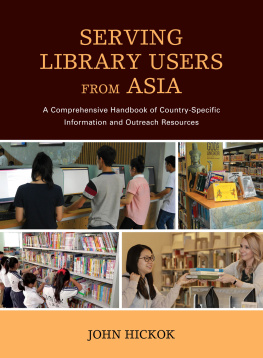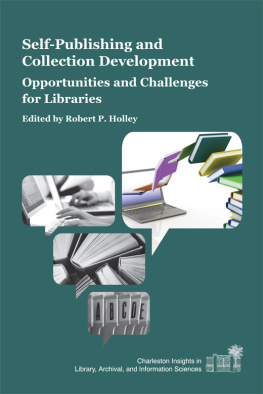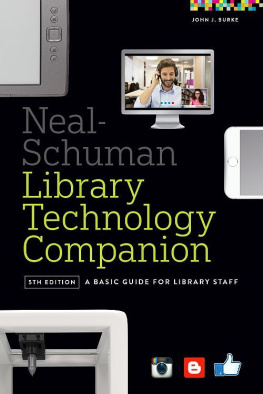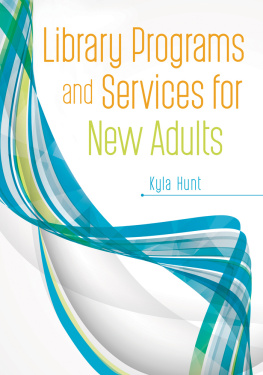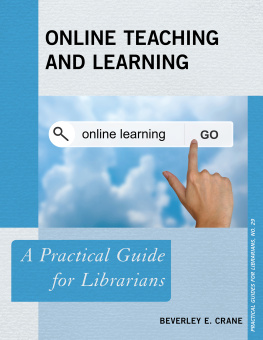Frances C. Wilkinson and Sever Bordeianu, Editors
All rights reserved. No part of this publication may be reproduced, stored in a retrieval system, or transmitted, in any form or by any means, electronic, mechanical, photocopying, recording, or otherwise, except for the inclusion of brief quotations in a review, without prior permission in writing from the publisher.
This book is also a vailable as an ebook.
To our colleague, friend, and mentor: Linda K. Lewis. You were our role model and we will always miss you.
Fran and Sever
To Mariv. You are always an inspiration.
Sever
Contents
Frances C. Wilkinson and Sever Bordeianu
Frances C. Wilkinson and Sever Bordeianu
PART II: WRITING AND EVALUATING SPECIFIC TYPES OF RFPs
COLLECTIONS
Lee Sochay
Susanne K. Clement and Christine N. Sraha
Dana D. Vinke
Shannon D. Pearce
Anne E. McKee
Lea J. Briggs
Kirsten Leonard
Christopher Holly
Mary Chevreau
Catherine Jannik Downey
Kyle R. Rimkus
Edward Castillo-Padilla
Laura Kohl
Justin D. Clarke and Patricia M. Rodgers
Stephen Bosch
Andrew K. Pace
Sever Bordeianu and Frances C. Wilkinson
A request for proposal (RFP) is a means by which a library or organization announces that funding is available for a particular project or program. Companies are invited to submit a proposal for the project's accomplishment. The Complete Guide to RFPs for Libraries is a wonderfully thorough look at the complete procurement process, including the philosophy behind RFPs, different types of requests, and the pros and cons in their preparation. The editors are meticulous in describing different types of RFPs through the contribution of chapter authors who are experts in their area of library or vendor operations and who have experience with the RFP process.
The book covers such essential questions as the following: What type of requests should be written (request for information [RFI], request for quotation [RFQ], or RFP) to meet the library's needs? What questions should be asked? How should responses be evaluated? How should the award be announced? Also, discussed are the RFP's aftermath, changing vendors, implementation, monitoring, evaluation, and follow-up.
The Complete Guide to RFPs for Libraries answers all those questions for academic, public, and school library collections, in various formats. For all of us, the important topics are covered thoroughly including descriptions, sample questions, and the evaluation process. The topics are comprehensive. They range from traditionalselecting approval plans for books and agents for serials, commercial binder services, and integrated library systemsto the sometimes overlooked or new areas including radio-frequency identification (RFID) systems, services for digitization projects, and emergency and disaster recovery services.
The final section provides the vendor perspectives and perceptions and is especially worthwhile, sharing the vendor's point of view on RFPs as well as the librarian-vendor relationship. Too often, librarians only see their point of view, and it is refreshing to give vendors a voice in the book. The section on ethics for librarians during the RFP process is also invaluable.
In a time when supposedly everything is "on the web" or "in Wikipedia," this monograph is an essential reference and go-to resource on the RFP bidding and solicitation process. Whether you are new to RFPs or an experienced hand, you will find something useful in this book.
Katina Strauch
Charleston, South Carolina
In 1998, my colleague Connie Capers Thorson and I published a book titled The RFP Process: Effective Management of the Acquisition of Library Materials with Libraries Unlimited. Some chapters were written by us, while other chapters were written by either librarians or vendors with RFP expertise. Many aspects of libraries have changed in the past two decades, and RFPs are becoming more important and commonplace than ever. The profession has learned the value of the RFP process in procuring quality goods and services, and even libraries that are not obligated by statute to use the RFP process often choose that route. The RFP process is a tried and true method of evaluating vendors to provide the best product or service for the best price.
The first book focused primarily on developing academic library RFPs for a variety of approval plans dealing with a multitude of subjects such as fine arts, science, technology, and engineering, or geographic areas like Latin America, and included a chapter on Domestic and Foreign Serials. There was also a chapter that anticipated the dramatic changes that were starting to take place in the profession, which addressed the emerging market for "Library System Interfaces and Electronic Services from Book and Serials Vendors." It was around that time that serials vendors and some book vendors began their transformation into providers of online content while still continuing to provide the traditional services that libraries were accustomed to, such as subscriptions and claims for print journals. But basically, in 1998 most libraries would only issue an RFP for a book vendor, a serial vendor, or an integrated library system and maybe a binder.
Many of the issues that were emerging then have become commonplace. Today, libraries take for granted that a serial vendor will provide a full array of products, both print and full text electronic, that did not exist to the same extent in 1998. The pricing models have also evolved so that both vendors and librarians know what to expect. There are also areas that simply were not prominent enough in 1998 to warrant discussion, such as digitization and RFID systems, and libraries had just begun to develop emergency/disaster recovery plans.
The current book, with chapters coauthored and coedited with my colleague Sever Bordeianu, deals with products and services available to a modern academic, public, and school library. It is intended to be more extensive and as such addresses both traditional goods and services, such as approval plans for books and subscription services for serials, and new areas mentioned earlier. But the book attempts to accomplish more than that. It shows that it is possible to craft an RFP for such very diverse goods and services as integrated library systems, bindery services, and the abovementioned digitization, radiofrequency identification (RFID), and emergency/disaster recovery services using a set of basic principles. The vendors' perspectives are also represented as well as the critically important librarian-vendor relationship. The book's final chapter highlights the significance of ethics in business transactions and how ethical behavior ensures fairness for all parties involved.

